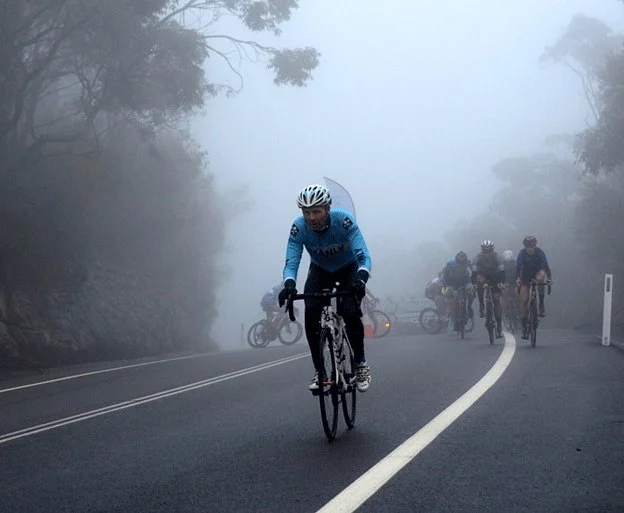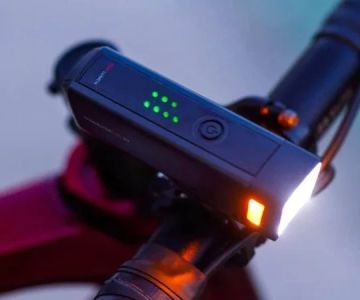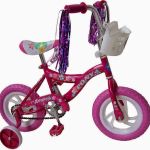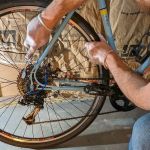
- 1. Understanding the Dangers of Foggy Conditions
- 2. Essential Gear for Cycling in Fog
- 3. Techniques to Improve Visibility in Fog
- 4. Riding Strategies for Foggy Weather
- 5. What to Do If You Get Lost in the Fog
- 6. How to Stay Safe While Cycling in Fog
1. Understanding the Dangers of Foggy Conditions
Cycling in foggy conditions presents unique challenges. Visibility is significantly reduced, which increases the risk of accidents. Whether you're on a busy city street or a quiet rural road, fog can make it hard to see other vehicles, obstacles, or even the road itself. For cyclists, this is particularly dangerous, as fog can obscure hazards such as potholes, debris, or even sudden changes in terrain.
It's essential to recognize that fog often lowers both your ability to see and your ability to be seen. This combination can make cycling in fog incredibly risky, especially for those who aren't prepared or aren't aware of how to adjust their riding style for these conditions. Knowing how to mitigate these risks is key to safe cycling in fog.
2. Essential Gear for Cycling in Fog
Before venturing out into foggy conditions, make sure you have the right gear. Visibility is your primary concern when riding in the fog, so investing in certain equipment can make a significant difference. Here are some essential items to help you stay safe:
- High-visibility clothing: Wear brightly colored or reflective clothing. This helps others see you even in low light.
- Bright front and rear lights: A bright front light illuminates the road ahead, while a rear light makes you visible from behind. Both are critical for foggy conditions.
- Reflective gear: Adding reflective tape or stickers to your bike, helmet, and clothing can help improve visibility.
- Fog-specific eyewear: Glasses or goggles designed to reduce fog buildup can help keep your vision clear and reduce glare from headlights or streetlights.
- Helmet with a built-in light: Some helmets come with integrated lights, which provide extra visibility while also protecting your head.
By ensuring you have these safety essentials, you can enhance your visibility and reduce the likelihood of an accident during foggy rides.
3. Techniques to Improve Visibility in Fog
Even with the best gear, visibility in fog can still be challenging. Here are a few techniques to help you improve visibility:
- Position yourself carefully: Ride as far to the right as possible, especially on roads with traffic. This allows drivers to see you earlier and gives you more time to react.
- Use your bell or horn: Fog reduces sound travel, so it’s important to alert other cyclists and drivers of your presence. Ring your bell or use your horn at intersections or when approaching bends.
- Maintain a safe distance: Keep extra distance between you and other cyclists or vehicles. In fog, it’s harder to judge distances, so more space will give you time to react.
- Avoid wearing dark clothing: Even if you have reflective gear, wearing dark or camouflaged clothing reduces your visibility to others. Bright colors stand out better in fog.
Using these techniques can significantly improve your chances of being seen and avoiding accidents.
4. Riding Strategies for Foggy Weather
When riding in fog, you need to adjust your riding style to account for the limited visibility and unpredictable conditions. Here are some key strategies for foggy weather:
- Ride slowly and cautiously: In fog, your reaction time is reduced, so lower your speed to give yourself more time to stop or maneuver around obstacles.
- Avoid aggressive riding: Sharp turns, sudden braking, or high-speed cycling can be dangerous in fog. Keep your movements steady and predictable.
- Increase your alertness: Always be aware of your surroundings. Listen for vehicles, cyclists, or pedestrians that might be approaching, even if you can’t see them clearly.
- Use landmarks and signs: When visibility is poor, use nearby landmarks or road signs to help guide your way and stay on track.
By adjusting your riding strategies to match the foggy conditions, you’ll be able to navigate the road more safely.
5. What to Do If You Get Lost in the Fog
If you find yourself disoriented or lost in the fog, don’t panic. First, stop and assess your situation. Take a moment to calm yourself and gather your bearings. If you’re unsure of your location, use the following steps:
- Stay put: It’s safer to stop and wait for conditions to improve rather than continuing to ride through fog when you’re unsure of your direction.
- Use your phone: If you have a phone with you, use GPS to locate yourself or contact someone for help.
- Find a safe place: If you can’t use your phone or GPS, find a safe location, such as a bus stop or a well-lit area, to wait until the fog clears.
Getting lost can be unsettling, but staying calm and taking action will help you find your way back to safety.
6. How to Stay Safe While Cycling in Fog
The most important factor when cycling in foggy conditions is to prioritize safety at all times. Here are a few final tips to help you stay safe:
- Check the weather forecast: Before heading out, check if foggy conditions are expected, and decide if cycling is safe or if it’s better to postpone your ride.
- Ride with others: If possible, ride with other cyclists. Riding in a group can increase visibility and safety.
- Be mindful of road conditions: Fog can make it difficult to see potholes or other hazards, so keep a close eye on the road and adjust your speed accordingly.
By preparing properly and riding cautiously, you can reduce the risks and enjoy a safer cycling experience even in foggy weather.
For additional gear recommendations or cycling advice, check out Cycling Guider for the best products to keep you safe and prepared for any weather conditions.







 Billet BMX5.0 (2 reviews)
Billet BMX5.0 (2 reviews) Far East Children Bicycle Factory1.0 (1 reviews)
Far East Children Bicycle Factory1.0 (1 reviews) Archer Motorsports, Inc.4.0 (8 reviews)
Archer Motorsports, Inc.4.0 (8 reviews) YEP Bike Works4.0 (55 reviews)
YEP Bike Works4.0 (55 reviews) Gorham Bike & Ski4.0 (498 reviews)
Gorham Bike & Ski4.0 (498 reviews) Alchemy Bikes4.0 (37 reviews)
Alchemy Bikes4.0 (37 reviews) How to Teach Kids to Ride a Bike: A Step-by-Step Guide for Parents
How to Teach Kids to Ride a Bike: A Step-by-Step Guide for Parents Tips for Riding on Busy City Streets: Smart Strategies for Urban Cyclists
Tips for Riding on Busy City Streets: Smart Strategies for Urban Cyclists Best US National Parks for Mountain Biking: Ride Epic Trails Across America
Best US National Parks for Mountain Biking: Ride Epic Trails Across America Best Aero Helmets for Time Trials and Racing
Best Aero Helmets for Time Trials and Racing How to Clean and Lubricate Your Bike Chain Like a Pro
How to Clean and Lubricate Your Bike Chain Like a Pro 10 Must-Have Items for Long-Distance Cycling Trips
10 Must-Have Items for Long-Distance Cycling Trips